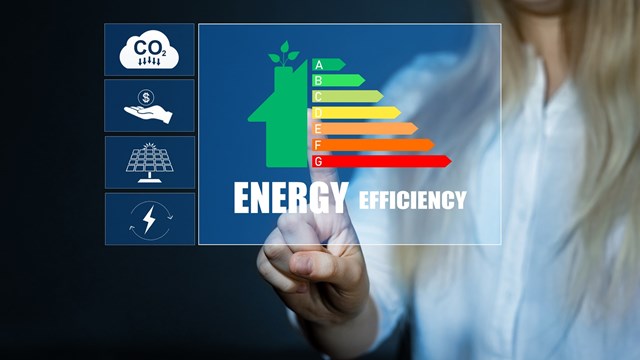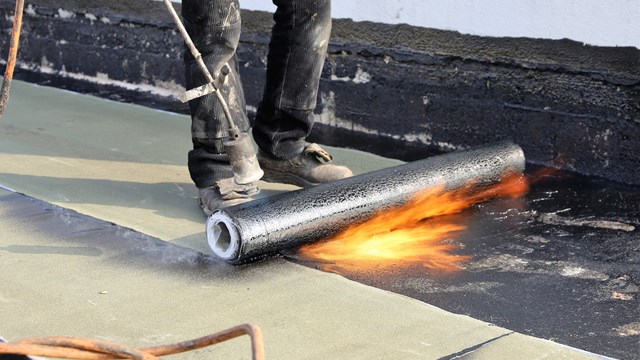
Whether the goal is to save the planet or just a few bucks, making and maintaining a green home is becoming a priority for more and more people. And while many are quick to point fingers at gas-guzzling automobiles as the main culprits behind global warming, the U.S. Energy Research and Development Administration says that residential buildings account for 21 percent of all carbon emissions in the United States. That makes housing almost as big a carbon contributor as transportation, which generates about 27 percent of the country’s harmful emissions.
But in the midst of an economic slowdown, building administrators are rightfully concerned with the cost of updating an older building to new green standards. Fortunately, the marketplace abounds with environmentally friendly products, all of which have led to competitive prices and a higher standard of performance. According to industry experts, co-op and condominium communities that adopt greener, more environmentally friendly products and policies can expect a strong return-on-investment, part of which may come from the increased appeal your sustainable building will have for prospective buyers.
Energy Efficiency
The “green” movement is a loose and sometimes ill-defined conglomeration of initiatives intended to reduce consumers’ impact on the planet’s ecosystems, among them efforts to recycle, conserve water and reduce dependence on carbon-emitting fossil fuels. But it’s the latter that has received the most media attention of late because dependence on fossil fuels puts a strain not just on our planet but on the U.S. economy as well.
“With energy prices so high, the best economic stimulus government can offer is help to access energy-saving technologies, from better transit to green buildings,” says Andy Darrell, regional director for Environmental Defense Fund in New York. “A green building can cut energy costs in half—now that’s stimulus for our wallets and the planet.”
The first and most basic step board members can take toward reducing energy use is to switch the lighting in common areas from incandescent to compact fluorescent lighting. “The up-front cost is a little higher, but over the lifespan of those bulbs, they’re actually a lot cheaper,” says Todd Larson, media director of the green non-profit Co-op America.
In fact, according to the U.S. government’s Energy Star program, Energy Star-certified fluorescent light bulbs use “75 percent less energy than standard incandescent bulbs and last 10 times longer.” Admittedly, the bulbs are roughly double the price of standard bulbs, but the long-term savings is clear. As for performance, fluorescent bulbs hold up to consumer expectations with only a few minor exceptions: namely, they are ineffective with dimmers and electronic timers, and for spotlights many consumers still prefer the more direct light of incandescent bulbs.
A Step Further
To achieve a more radical increase in your building’s energy efficiency, most experts agree you should start with an energy audit, which is essentially a report that assesses how your building measures up to others like it when it comes to energy usage and waste.
As Cecily Kaz, a senior sustainability consultant with Steven Winter Associates, Inc., an energy consulting firm with several locations including New York and Washington D.C., explains, “Cost is always a big part of an energy assessment—there’s a payback analysis that’s done. For example, say you hire an energy consultant who says, ‘We think you should replace your boilers with 94 percent efficient boilers.’ The energy analysis should tell you exactly how long it would take for that investment to pay for itself based on the energy savings.”
Energy consultants consider every component of your building, from the hot water heater to the roof to cracks in walls, all to help determine where your building can improve most in its energy efficiency profile. They can also help explore your options for improving that profile going forward.
A roof, for instance, plays a major role in properly insulating a building.
“Adjustments could range from just buying a roof with a light color — which makes a difference in a warmer climate—to actually having a “green” roof, some of which are fairly competitive in price and add the feature of actually keeping the building cool,” says Larson.
Of course, it’s important to think of a building as the complicated system that it is. Consultants make sure the energy you save with a new roof isn’t lost elsewhere in the system.
“What we strive to achieve is at least a 20 percent reduction in energy used on the whole,” Kaz says. “And getting up to a 30 percent reduction is certainly achievable.”
To help finance your green building, the New Jersey Clean Energy Program (www.njcleanenergy.com), a division of the NJ Board of Public Utilities (NJBPU) offers a variety of incentives, each of which is discussed on its website. Through COOLAdvantage and WARMAdvantage, for instance, New Jersey businesses and residents receive cash rebates for the installation of heating and cooling devices approved by LEED, the third-party green building certification program developed by the U.S. Green Building Council. While New Jersey builders themselves have been relatively slow to embrace green concepts, energy experts say they’re encouraged by the efforts of the community at large.
According to a press release from NJBPU President Jeanne M. Fox, “When faced with issues such as global warming and climate change, New Jersey municipalities and residents continue to rise to the challenge.”
Green Products
Just a few years ago, the market for green products was tiny, the lack of competition leading to overpriced goods. The green culture boom of the last few years has created a thriving market, filled with consumer-friendly competition. But as Kaz notes, “Some products might not be as good”—or as green—“as you think they are.”
When it comes to products like paint and floor cleaners, the costs and benefits of going green—and indeed what really makes a product “green” in the first place—can seem poorly defined, which is why the non-profit Green Seal began offering third-party green certification for all sorts of goods. In operation since 1989, Green Seal is the oldest and largest eco-label in the United States. Their website (www. greenseal.org) provides a list of some 2,700 certifiably green products, many of which are already available at your local market or home repair store. In addition to meeting a long list of green criteria, Green Seal takes the extra step of confirming that the products perform as effectively as their non-green counterparts. Sometimes, the cost of all this is passed along to the consumer. Often, it is not.
“We certify a lot of products in a lot of different price ranges,” says Linda Chipperfield, vice president of marketing/outreach for the non-profit, which is based in Washington D.C. “But we have seen many cost-competitive products that are green certified. Most of the major paint brands have a line that is Green Seal certified—they’re actually sold in Lowe’s. It’s a myth that green products have to cost more, it really is.”
According to Chipperfield, Green Seal evaluates “the entire lifecycle of the product.” As an example, she mentions a few of the many criteria Green Seal uses to assess cleaning products. They can’t contain carcinogens. They have to be non-corrosive to the skin and eyes. The packaging must be made out of recyclable or recycled material.
Many cleaning services already have access to Green Seal certified products, if not for the customer’s sake then for the safety of the custodians themselves. On its Green Pages website (www.green pages.org), Co-op America provides a comprehensive list of green service providers throughout the United States.
“We’re trying to reduce environmental impact,” Chipperfield says, “but it also has to do with the impact on human health. Even the insurance companies are starting to sit up and take notice, because the use of high chemical content products can be dangerous for workers.” She claims insurance companies are already moving toward offering financial breaks to employers that maintain an environment free from harmful chemicals.
Leading by Example
Nevertheless, greening your building is an investment that costs you money now. This might seem like an unfair burden to take upon oneself, especially when neighboring communities continue to ignore conservation efforts. But keep in mind that leading by example really does work. The green movement began with fringe advocacy groups and has blossomed in recent years into a mainstream phenomenon.
According to Judith Webb of the U.S. Green Building Council, the green culture will only become more prominent as climate change and fossil fuel shortages become increasingly pressing issues. And where culture cannot succeed on its own, government has begun to step in to make sure people are moving in the right direction.
“We’re all about market incentives,” Webb says. “That’s a great way to get people started. Some local communities have started to mandate green living. That’s not necessarily something we support, but people need to do what they need to do. We’re all about doing things in a practical way, not radically. Incremental steps. We advocate trying to keep people moving forward.”
It is also true that individuals, not just co-op boards and government officials, often make profound impacts on the sustainability of their environment. From turning the water off while you’re brushing your teeth to unplugging your cell phone charger when it’s not being used, every little thing helps contribute to a cleaner future.
“The more people that do it, the bigger it becomes,” Larson says. “And it’s a great thing to be a part of from the beginning.”
Jonathan J. Levin is a freelance writer and copy editor living in Philadelphia.






Leave a Comment